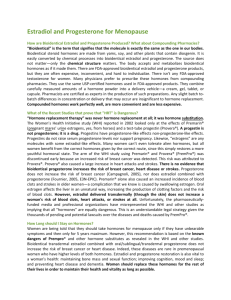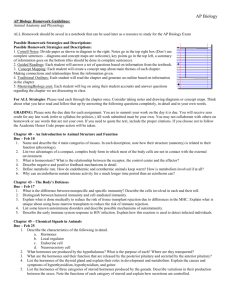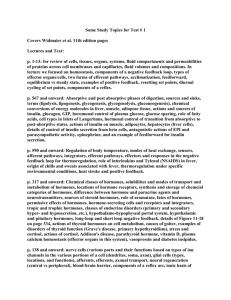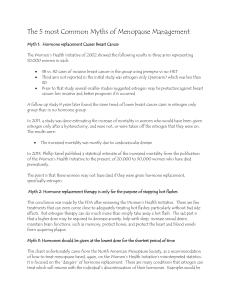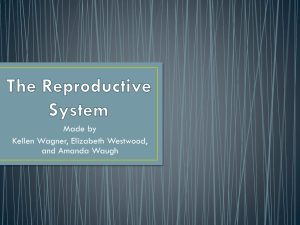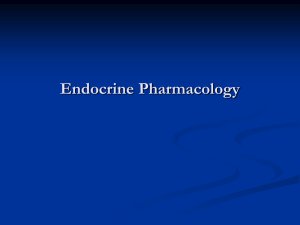BIOIDENTICAL HORMONES -
advertisement
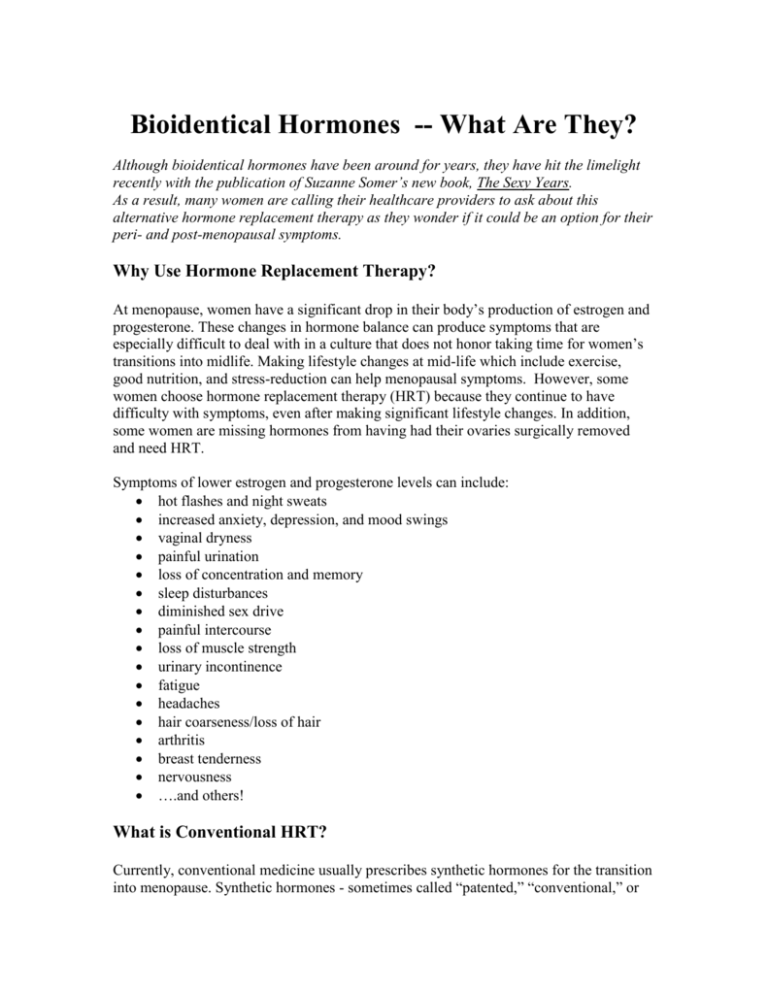
Bioidentical Hormones -- What Are They? Although bioidentical hormones have been around for years, they have hit the limelight recently with the publication of Suzanne Somer’s new book, The Sexy Years. As a result, many women are calling their healthcare providers to ask about this alternative hormone replacement therapy as they wonder if it could be an option for their peri- and post-menopausal symptoms. Why Use Hormone Replacement Therapy? At menopause, women have a significant drop in their body’s production of estrogen and progesterone. These changes in hormone balance can produce symptoms that are especially difficult to deal with in a culture that does not honor taking time for women’s transitions into midlife. Making lifestyle changes at mid-life which include exercise, good nutrition, and stress-reduction can help menopausal symptoms. However, some women choose hormone replacement therapy (HRT) because they continue to have difficulty with symptoms, even after making significant lifestyle changes. In addition, some women are missing hormones from having had their ovaries surgically removed and need HRT. Symptoms of lower estrogen and progesterone levels can include: hot flashes and night sweats increased anxiety, depression, and mood swings vaginal dryness painful urination loss of concentration and memory sleep disturbances diminished sex drive painful intercourse loss of muscle strength urinary incontinence fatigue headaches hair coarseness/loss of hair arthritis breast tenderness nervousness ….and others! What is Conventional HRT? Currently, conventional medicine usually prescribes synthetic hormones for the transition into menopause. Synthetic hormones - sometimes called “patented,” “conventional,” or “artificial” hormones – are chemically different than the hormones the human body produces. Since they are not “natural”, they can be patented and mass produced. The most commonly prescribed type of synthetic estrogen is Premarin, which is estrogen gathered from pregnant horses’ urine. Provera is a commonly used synthetic progesterone. These synthetic hormones, and others like them, are not exact copies of women’s hormones, but they work because they bind to the same estrogen and progesterone places in our bodies (receptor sites) to which our naturally produced estrogen and progesterone hormones bind. In some women, synthetic hormones can produce intolerable side effects, such as breast tenderness, high blood pressure, fluid retention, headaches, nausea, etc. Another down side to synthetic hormones is that these mass produced products cannot be easily tailored to a woman’s individual needs. However, your practitioner can customize your regimen somewhat by using lower doses, changing the methods of delivery (such as skin patches and vaginal rings), and by using different brands. What Are Bioidentical Hormones? Bioidentical hormones are manufactured to have the exact molecular structure as the hormones made by your own body. These hormones are sometimes called “natural hormones”. This is a misnomer because: bioidentical hormones can be derived from a variety of sources, including from the hormones of pigs or horses; and bioidentical hormones undergo several synthetic processing steps before the bioidentical end product is obtained. There is no commercially available product that is both completely natural and bioidentical. That being said, the therapeutic effects of bioidentical hormones may be associated with fewer side effects, and a woman’s body may be more responsive to these hormones because they are what a woman’s body makes naturally, prior to midlife changes. This is a theoretical statement, as we have no long-term studies to confirm this, although common sense would say that our bodies would respond better to exact copies of our naturally-occurring hormones. Are Bioidentical Hormones Safe? Because we do not yet have long-term, randomized studies on bioidentical hormones, it has not been established whether they are safer than synthetic hormones. One must understand that the research that was first done on synthetic hormones was funded by the pharmaceutical companies that made them. This kind of funding has not been available for bioidentical products compounded by pharmacists, as they not patentable, and therefore do not generate large profits. It wasn’t until the federal government funded research studies on hormones that the detrimental effects of synthetic hormones were found (ie. higher risk for breast cancer and heart attacks). Therefore, important research on the long-term effects of bioidentical hormones will need to also be funded by the federal government, which may only happen when women become vocal about the glaring lack of research on bioidentical hormones. Currently, most practitioners do not recommend that any kind of HRT - bioidentical or synthetic -- be used indefinitely as a “miracle anti-aging cure”, and that long-term use for menopausal symptom relief (i.e. longer than 3-5 years) be only used with an extensive risk assessment. How Are Bioidentical Hormones Made, and Where Do You Obtain Them? There are several “branded versions” of bioidentical hormones now available in a “onesize-fits-all” dosage regime that can be prescribed by your healthcare provider. Also available is bioidentical hormone replacement therapy (BHRT) that is compounded by a pharmacist. This therapy has the advantage of being individualized to help with a woman’s specific symptoms and can be adjusted slightly, both in dosage and method of delivery, as her symptoms change. Small changes can be made in the hormone regimens used by compounding pharmacists because they are literally “mixing the hormones” themselves. The compounding pharmacist prepares the hormones from a healthcare provider’s prescription in a variety of dosage forms, strengths, and combinations that can be customized for each patient’s needs. To create bioidentical hormones, the pharmacist mixes a combination of estradiol, estriol, and estrone (for estrogen replacement), progesterone, and other hormones, if needed. The hormones used are like the hormones of a premenopausal woman. A compounding pharmacist buys the synthesized soy or yam products (from which the bioidentical hormones are derived), from the same pharmaceutical companies that supply conventional hormone therapies. They make these hormones from FDA-approved ingredients and from FDA-approved laboratories. However, the FDA has not approved of all bioidentical hormones for menopausal treatment (see chart). For example, EstroGel® is FDA-approved, while compounded bioidentical hormones are not. Compounding pharmacists also must comply with the regulations of state boards of pharmacy and belong to The International Academy of Compounding Pharmacists. To locate a compounding pharmacy that works with providers’ prescriptions, contact The International Academy of Compounding Pharmacists: 800-927-4227 or www.iacprx.org. What Tests Are Used for Prescribing HRT? The problem with measuring estrogen levels for treatment decisions is that estrogen interacts with other hormones, so the levels change day-to-day, minute-to-minute. Levels also fluctuate depending on time of the month, during peri-menopause swings, and many other factors. Levels of hormones can hypothetically be tested by looking at saliva, blood, or urine. Salivary tests for estrogen levels in a menopausal woman do not test for all estrogens in the body; therefore this is not a good baseline test for estrogen. Urinary hormone levels are also problematic as they all do not measure all estrogens. Some practitioners are now using blood serum tests or “hormone panels” as a basis for treating with bioidentical hormones. However, these tests may be inadequate to evaluate the effect of therapy on symptoms. Practitioners who do use these blood tests, typically use them at least every 3-6 months until hormone balance is restored, and then once a year at the woman’s annual exam. There are many practitioners who feel any kind of hormone testing is unnecessary if the goal is to help women with their specific symptoms. In these cases, symptom checklists are used, along with a woman tracking her progress over time. The woman’s report of her symptoms is used to make the subtle changes in therapy needed for relief. She must also meet frequently with her healthcare provider to adjust hormones as her symptoms improve or change. In summary, the goal of any kind of hormone replacement therapy is to alleviate symptoms caused by the natural decrease in production of hormones by the body and to bring the body back to hormonal balance. Proponents of using compounded bioidentical hormones believe they should be “better for you” because they imitate the body’s natural processes as much as is possible and can be individualized for the patient’s specific symptoms. However, it should be emphasized that this kind of therapy requires substantial effort and time on the part of the pharmacist and health care provider and does not have the longterm research behind it that conventional therapies have. In either case – bioidentical or synthetic - prescribing HRT is perhaps more an art than a science, requiring a collaborative relationship between patient and healthcare provider. For more in-depth information on menopause and other women’s health concerns, visit our free WHRC lending library. And to learn more on BHRT, come on Wednesday, March 2, at 5:30 pm to DHMC Auditorium E for a free lecture on bioidentical hormones presented by Marc Cote, R.Ph., a local compounding pharmacist.


